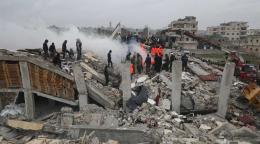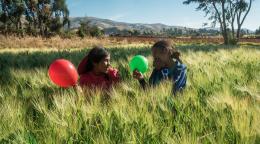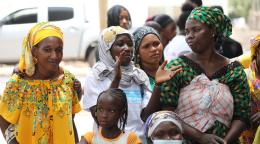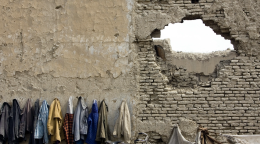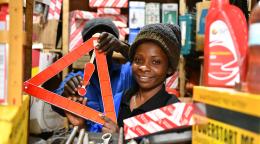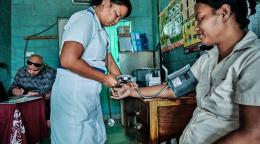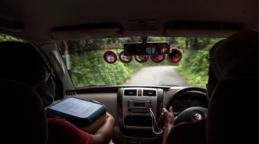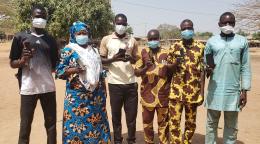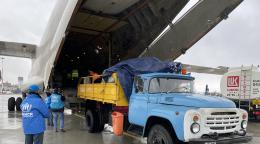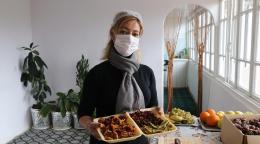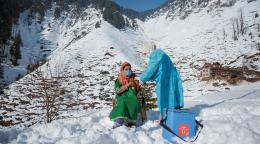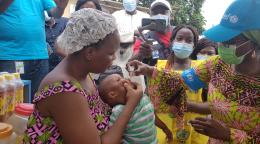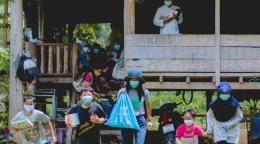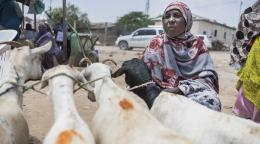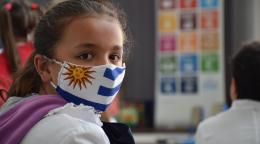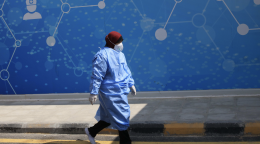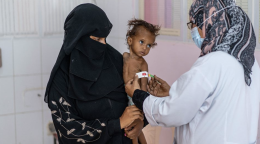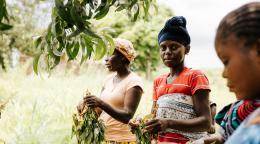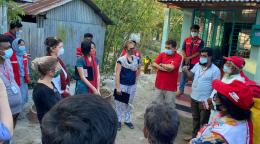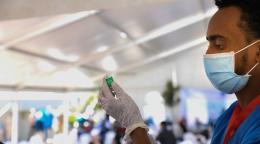Life shields: A new generation of protective gear for merchants in Peru
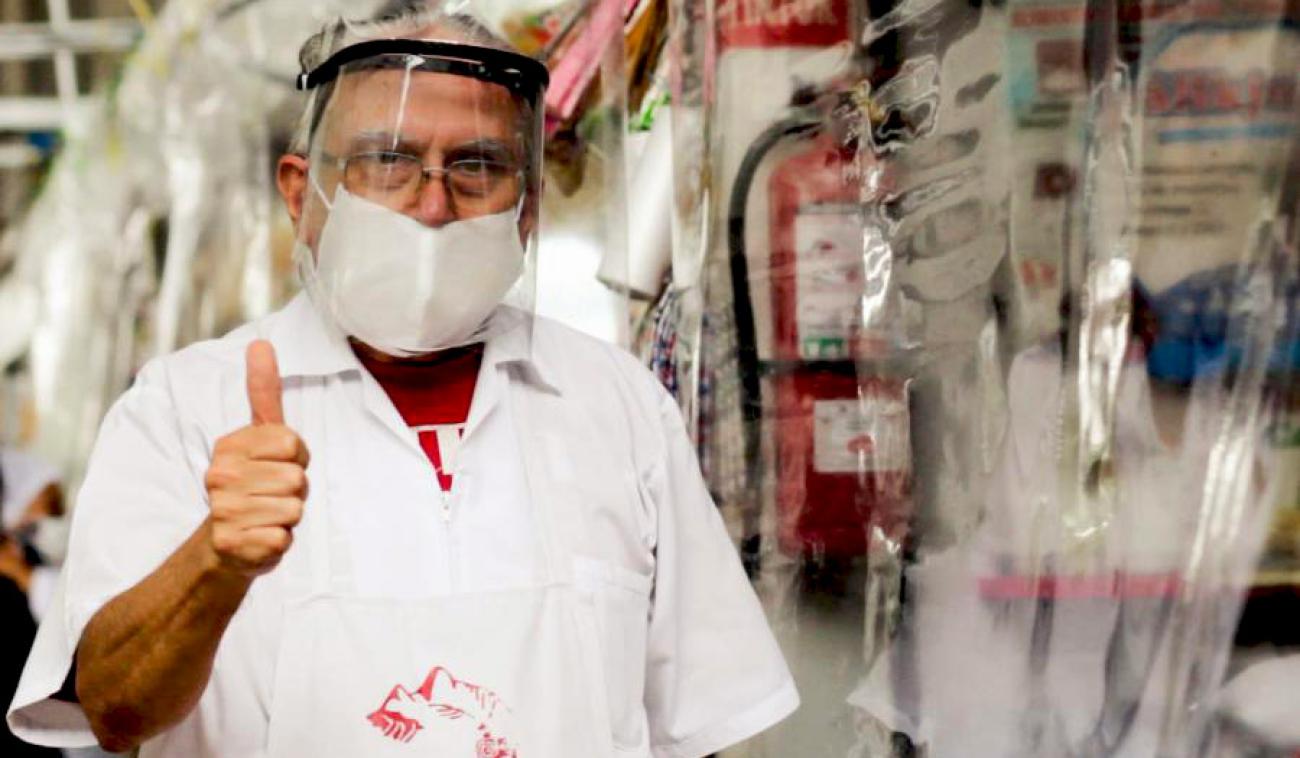
Those who work in Peru's traditional markets are on the front line of the fight against the pandemic. According to the 2019 National Household Survey, three out of five homes in the country rely on these markets to purchase essential goods. Just like doctors, nurses, and police, these merchants are at high risk of contracting COVID-19. Frequent handwashing and face masks alone are not sufficient. It becomes even more complicated now that the quarantine has ended nationwide. That’s why, these essential workers have adopted a new tool that enables them to face the new normal: the Life Shields that could save their lives and those of their communities.
The marketplace paradox
Peru was the first country in Latin America to declare mandatory lockdown, a strict measure to stop the spread of COVID-19 that lasted for 107 days. However, even before the lockdown was gradually lifted, the number of positive cases in Peru surpassed the numbers in some of the hardest hit European countries. With more than 400,000 total cases (this number is still on the rise), as of early August the number of cases in Peru were second highest in the region, second to Brazil.
Facing this unexpected increase, analysts and journalists set the spotlight on markets, the vendors and congestion, which revealed underlying inequalities. Only 49% of Peruvian households have a refrigerator—this number decreases by more than half for households living in poverty. This means that during the pandemic’s peak, most families were forced to go outside frequently and expose themselves each time they needed to buy food.
“We always advise our clients to keep their distance and their masks on,” explains Manuela Guerra Huallpa, who has worked for 30 years alongside her sister selling meat at the Gran Mariscal Ramón Castilla Municipal Market, better known as Lima’s Central Market. “Everything is covered in plastic, it’s complicated because it’s harder for customers to see the goods, but it’s for everyone’s wellbeing,” she adds.
Like the Guerra sisters, every merchant inside this famous market has implemented several measures to protect their health and that of their customers.
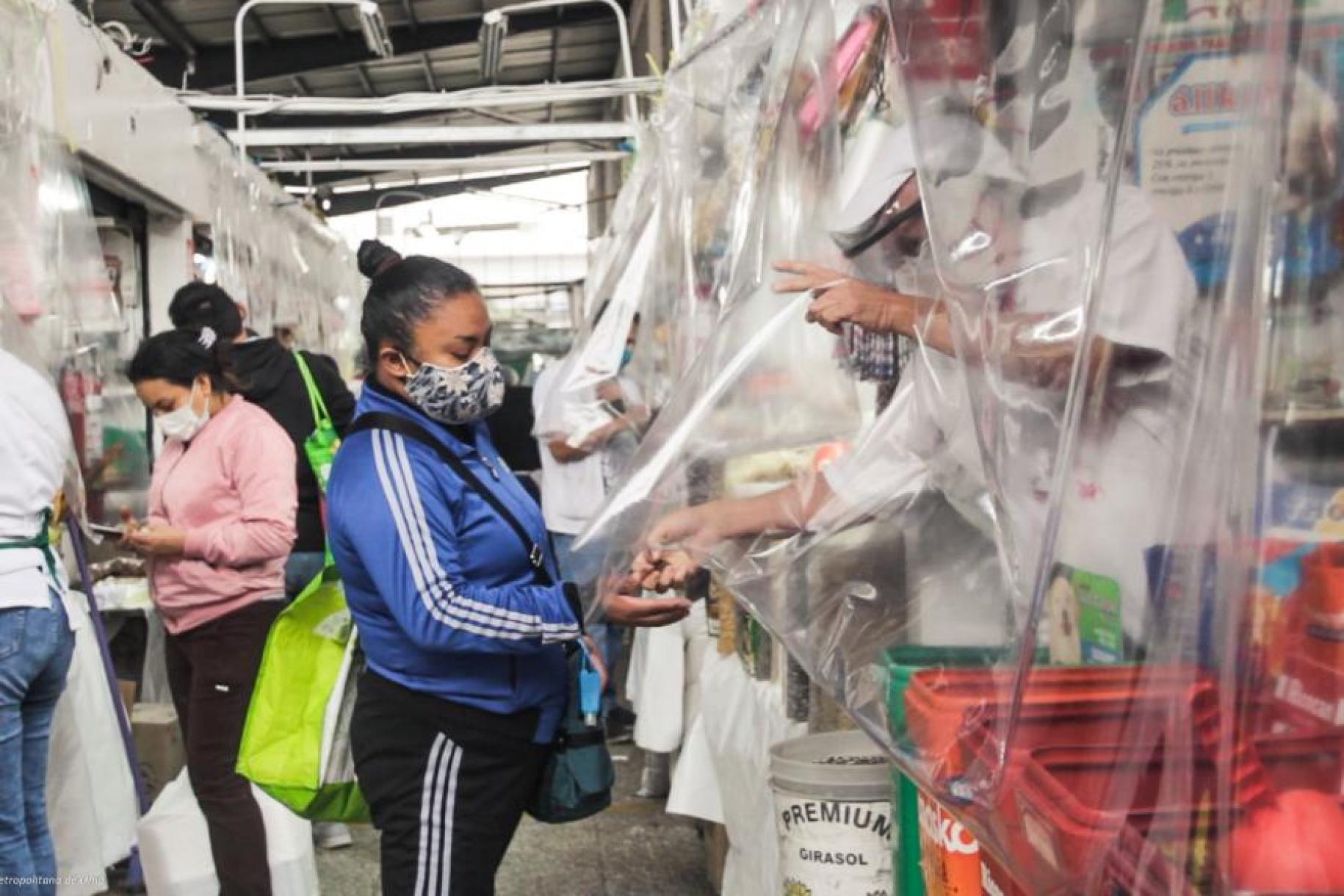
Innovation that protects: Local solutions for the new normal
The United Nation’s expertise with other high-risk diseases show a great number of transmissions don’t happen through direct contact; rather, many occur through involuntary self-inflicted contact with one’s face after touching contaminated surfaces, despite the user wearing traditional personal protection equipment (PPE). The PPE can give people a false sense of security. The more PPE worn; the more people relax their safety precautions.
The Life Shields provide a solution to this problem by establishing a physical barrier that limits involuntary contact with one’s face. By harnessing the collective intelligence linked to different groups specialized in innovation and digital production, the United Nations Development Programme (UNDP), the Pan American Health Organization (PAHO/WHO), the Municipality of Lima, PerúMakers, and the FabLabs Peru network has designed this new generation of personal protection equipment, fully centred around the vendors/buyers’ experience.
Unlike other protective equipment, Life Shields completely cover the face of the merchant, including the chin. These face shields aim to be as environmentally friendly as possible—they are made of biodegradable and recyclable plastic. In addition, due to their simplicity and lightness, and the fact that they are made with recyclable and biodegradable materials, the vendors can fully integrate them into their new normal, without depending on specific providers or producers, and they are easy to assemble, clean and replace.
“This face shield is pretty flexible and is comfortable to wear while working. I think it is well designed. I feel safer when I wear it, not only because it protects the consumer, but also the seller,” says Luis Ropa Chauca, a 60-year-old merchant, who is one of more than 1,000 vendors in Peru’s Central Market using this new gear.
Without stigma
“We have to offer security and a better experience now that we’re reopening; we have to catch our customers’ attention with safety and protection, and always with a warm welcome back,” explains Enrique Salgado, another merchant in the Central Market. Less than a month ago, this market was closed by the Municipality of Lima after 59 out of the 201 merchants tested positive for the virus.
Even though this iconic market has reopened with new – and strict – security measures, its numbers reflect a newly acquired infamy, full of stigma. “Sales have gone down, almost to a fourth of what they were. Emotionally, we’re dismayed,” Ropa says. “Our work is a service to the community; we truly enjoy the interaction with our clientele, and it’s also a way to build friendships with our neighbours and fellow merchants,” he explains. The existence of the pandemic implies an interaction barrier between customers and merchants. “One goes on acquiring the vocation of service, getting to know our community and treating them with affection; it is practically an emotional bond," says Salgado who, following his parents' legacy, has worked in this market for 12 years.
The Life Shields is an initiative that demonstrates the will for change from the merchants themselves and the efforts they are undertaking to overcome this crisis through partnerships and innovative methodologies.
“The safer we operate, the more our clients will trust us and visit us more frequently,” says Salgado with confidence.
These Life Helmets provide protection to the buyers and to these merchants who supply food to a country during this emergency. These vendors and other essential workers are helping to reignite their economies safely, free of stigma.
Caring for caretakers
Following in the steps of the first Life Shields used for markets and its vendors, work is already underway on the design of new gear adapted for other essential workers, such as medical personnel, armed forces and law enforcement.
As the economy reopens, essential workers remain as the highest at-risk group since the pandemic began. In early August, newfound positive cases rose 27% among their ranks. It is evident that this swift increase requires citizen mobilization and use of innovative mechanisms to help improve protection and access to resources.
With the goal of ultimately helping 100,000 essential workers, the Life Shields campaign will spearhead the Caring for Caretakers crowdfunding initiative during August and September. People will have the opportunity to be change makers and contribute to the production of new lifesaving equipment through direct financing, activism, creativity and digital communication. Via these actions, we can all build a new normal that is increasingly safe, inclusive and sustainable, where no essential worker is at risk of disease or death just for doing their job.
Author: Sally Jabiel
Photo: Municipality of Lima
General Supervision: Karim Capristan
The article was originally posted on the UN Peru website. To read the article in Spanish and learn more about the work being done in the country, visit the UN Peru website at https://peru.un.org/.
